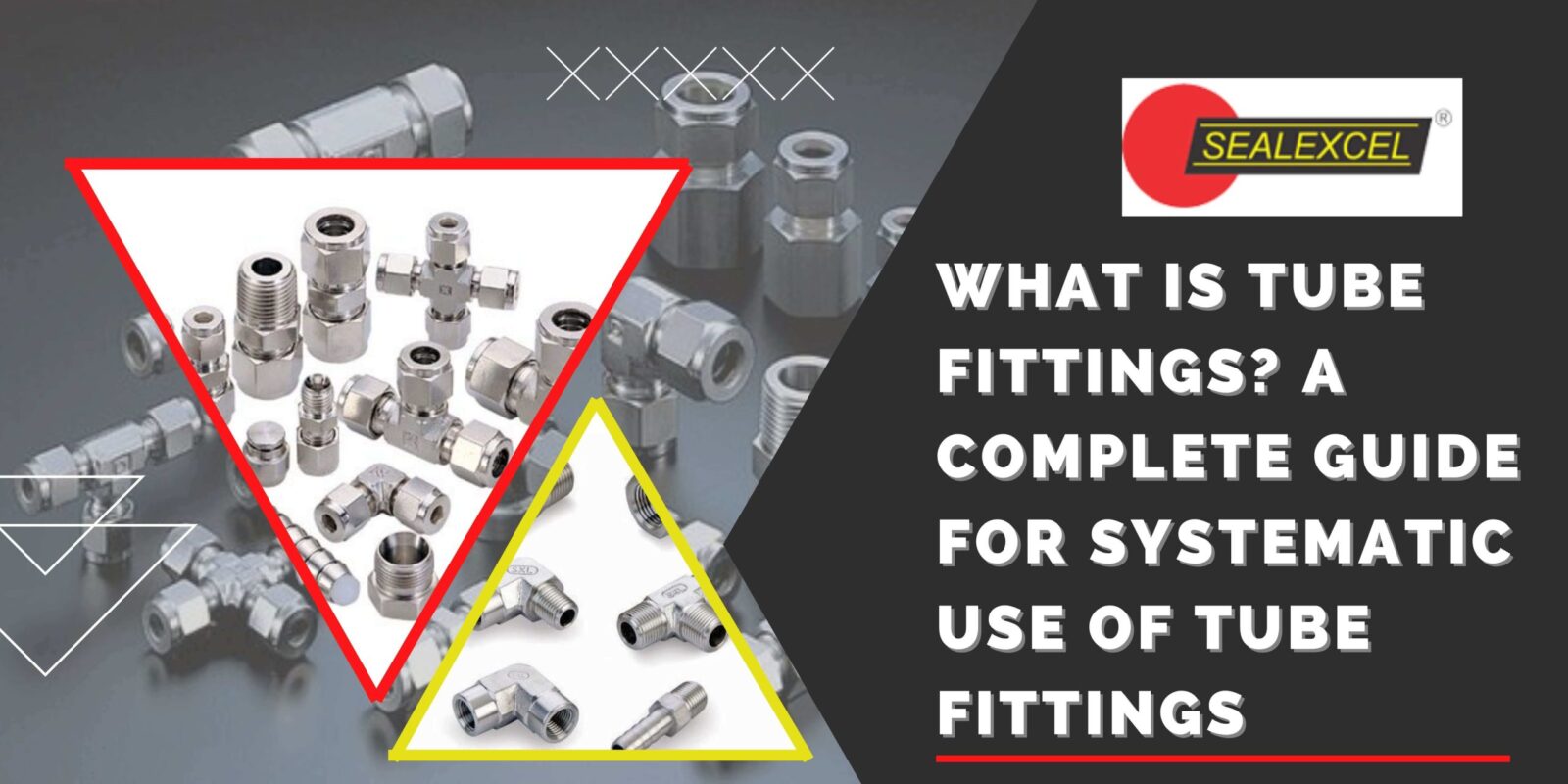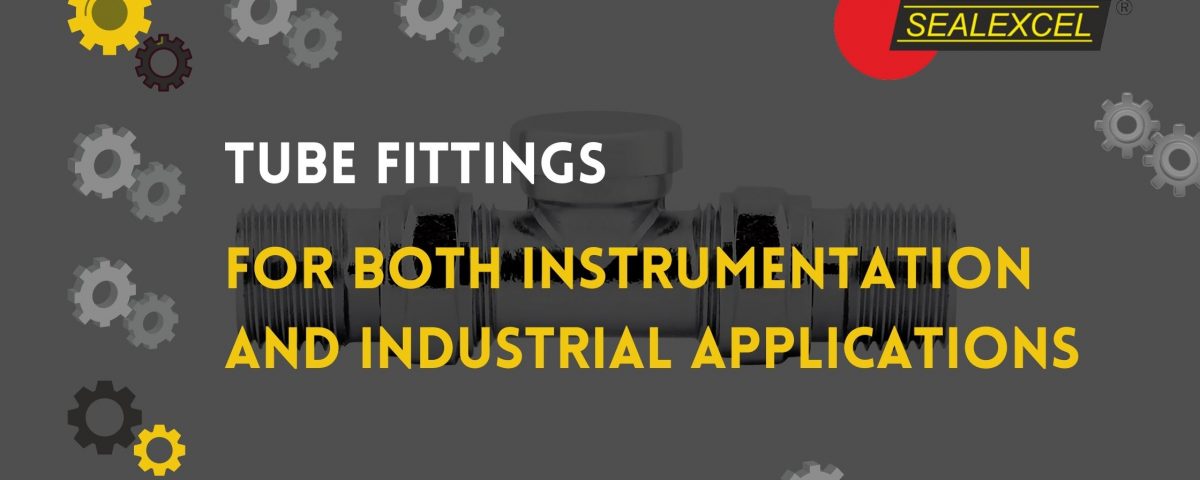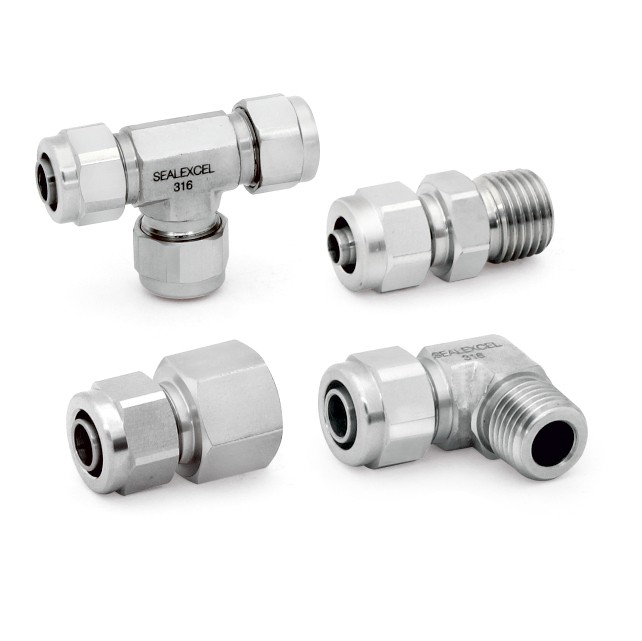Tube Fittings – How to Properly Install Tube Fittings?
November 29, 2021
What Are Tube Fittings? A Complete Guide For Systematic Use Tube Fittings
July 4, 2022Most primary industries, such as aerospace, defense, power generation, chemical processing, oil & gas, petrochemical, alternative fuels, shipbuilding, and medical equipment, rely on process measurement and control instrumentation.
Control valves, fittings, tubing, flow meters, pressure sensors, and level gauges are all included in the instrumentation fittings category. They are used to transfer, measure, and control system flow, pressure, and temperature and calibrate the system.
Seal Excel, a tube fittings manufacturer, provides a wide range of fitting choices to meet the needs of a wide range of clientele who offer high-quality product design and twin ferrule compression fittings. High-to-low-pressure tube fittings are available in four different types while their final connections and applications distinguish them.
Compression Fittings
Compression fittings are the most frequent and easiest to use, and the nut, body, and ferrule are the three parts of a compression fitting (single or double). The ferrule coins compress the tube and ensure a secure hold on its surface. This kind of fitting does not necessitate the use of any specific tools or equipment; simply slip the tube into the end connection and tighten it with a box wrench to the desired torque or torque wrench for precision applications. Compression fittings are frequently the least expensive overall assembly due to their ease of installation.
Compression fittings also work well with tubing with thinner wall thickness, which allows for higher flow rates and is easier to bend and handle. When used with compression fittings, thinner-walled stainless steel tubing can allow up to 33% more flow.
Cone and Thread Fittings
Cone and Thread (C&T) connections are occasionally utilized in extremely high-pressure applications up to 150,000 PSI, but they are most commonly employed for up to 15,000 PSI pressures. The tube is chamfered “coned” and countersunk into the fitting, resulting in a firm and tight connection. The tube ends must be precision-shaped with a fine surface finish and then threaded so that the tubing is assembled tightly against the junction to ensure a tight seal. All of this is usually done on the job, which dramatically increases the installation time and expense of C&T fittings.
Butt Weld Fittings
A butt weld fitting is an assembly that gives the best vibration protection, and a well-formed butt weld has the best resistance to vibration and fatigue since the metals are permanently bonded together. A butt weld connection is the most costly of the three basic instrumentation fitting assemblies due to the expense of welding equipment, a specialist welder, and additional work time.
Push-To-Connect Pneumatic Fittings
Push-to-connect fittings link tubing with an internal collet and an external push button, ensuring leak-free and secure couplings for all pneumatic applications. Push-to-connect pneumatic fittings enable instant connections without using tools by simply pushing the tube into the fitting, and disconnections are just as simple.
Seal Excel Tube fittings come with instructions for installation, which include making sure the tube end is square and clear of burs. It should be noted that there is no chamfering at the tube’s end.
BSP/ISO/NPT fittings and SAE/MS straight thread features are provided on compression tube fittings. All of our good lock tube fittings feature four important precision components: the front ferrule, the nut, the back ferrule, and the tube fitting’s body.
All raw materials meet industry and chemical specification criteria, and the tube fittings are made of stainless steel 316. All tube fitting units have a heat code traceable function that is very useful in tracing the unit back to a certified material test report.
As a stainless steel pipe fittings provider, we have a large assortment of Stainless Steel Compression Fittings and Twin Ferrule Compression Fittings to meet a wide range of industrial demands.
All of our products are put through helium leak detection tests and a hydraulic burst pressure test, ensuring that they are highly robust and safe in a variety of high pressure and vacuum applications.




